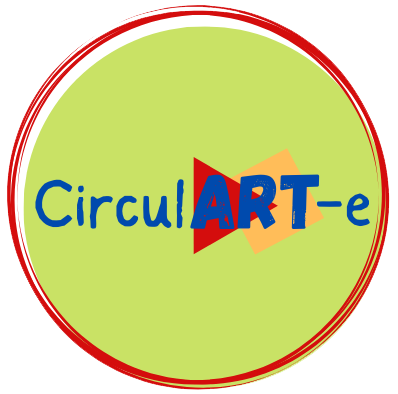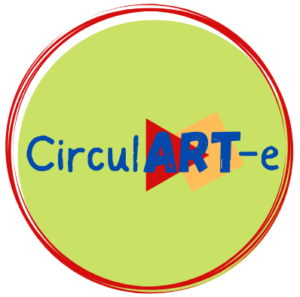Explore the toolkit and activities here
Step by step through the toolkit
Step 1 – Choose your topic
This is already done!
If you want to explore a different topic, you can go back to the overview and choose a different one.
Step 2 – Find your activity
Now, we invite you to explore the activities. Each activity features a step-by-step description and more information on duration, number of participants, and more…
Step 3 – Explore the materials
You can choose whichever activity fits your needs and your learners best. Some activities also provide further information in the form of a tutorial video, printable handouts, as well as additional resources.
Closing the Loop: principles of the Circular Economy
“Closing the Loop: Principles of the Circular Economy for Cities and Houses” is a targeted activity offering insights into applying circular economy principles specifically within urban and residential contexts. Participants will delve into strategies for sustainable urban planning, efficient resource use, and waste reduction, empowering them to envision and implement circular practices that contribute to more resilient and eco-friendly cities and homes.
It is not possible to work in a blended version as each group has to move from one poster to the next one. This makes the activity interactive in the way each group builds on the previous group’s brainstorming.
Skills addressed
Expected learning achievements
Duration
min. 1 hour and 30 minutes
Group size
min. 6 participants
Materials
Slides and informative material on circular economy, 3 blank posters, tape, sticky notes, markers and pens
Swap Party
The objective of our workshop is to allow participants to become familiar with swap parties as one of the concepts and practices of the circular economy and how to apply it in their own community. It also aims at normalising practices of exchange rather than dispose or keep unused. The key objective will be for participants to build confidence and skills for them to be able to imagine, project and deliver a swap party in their community.
Participants can be asked to make a self-directed work creating a magazine of people’s objects to exchange during the Swap party event using Canva.
The organisation of the Swap party event will require participants to self-organise themselves to organise the event (logistics, creation of the event on social media, invite people to join).
After the Swap Party event, invite participants to get together and evaluate the process:
- How was it to organise the swap party? How did you feel?
- The event met your expectations?
- What worked well?
- What can be improved?
- What helped?
- What didn’t help?
- How can this practice be improved and expanded?
Skills addressed
Expected learning achievements
Duration
240 minutes
Group size
5-10 participants
Materials
- Tables, chairs, boards, papers, markers and laptops
- Presentation about circular economy
- Presentation about swap party
Seeds of Change
This activity has to be done in-person but can also be done individually at home.
Skills addressed
Expected learning achievements
Duration
2 days
Group size
2+ participants
Materials
bowl, hot water, seeds, paper, blender, plate
Canvas for a Circular Economy Business Model
The “Canvas for a Circular Economy Business Model” activity aims to enhance participants’ socio-environmental skills by educating them on the principles and strategies of a circular economy. Through this activity, participants will gain knowledge on how to transition from a linear to a circular economy. This involves reimagining existing products or services and creating new ones that contribute to the shift.
The workshop can be imagined in blended version by allowing remote participants to connect via a platform (e.g. zoom, meet or teams) and depending on the number of online participants they can either work together online in a separate zoom room, or they can be divided in groups or they can work with other participants in person. The business model canvas can be recreated and filled in on a miro board to facilitate online collaboration.
Skills addressed
Expected learning achievements
Duration
120 – 180 minutes
Group size
6 – 12 participants
Materials
Slides and informative material on circular economy and circular business models, printed business model canvas
If I were an archaeologist
The activity explores the meaning of circularity through the practice. The participants discover different possible interpretations of circularity by inventing themselves new functions and giving new meaning to objects and images.
The activity can be done within an online setting too if, instead of objects, you work with photos depicting these objects. For the visual storytelling part, you can choose between the video storytelling or the display panel.
Skills addressed
Expected learning achievements
Duration
90 -120 minutes (depending on the size of the group)
Group size
4-12 participants
Materials
- A collection of photos that can be also shared digitally with video projector or on the participants smartphones/or a collection of everyday objects and tools
- Pens and paper sheets or notebooks
Eco-friendly events: a small guide
“Eco-friendly Events: A Small Guide” is a concise and informative activity designed to provide practical insights into organising environmentally sustainable events. Participants will gain valuable knowledge and practical tips on minimising environmental impact, reducing waste, and promoting eco-conscious practices in event planning.
The workshop can be imagined in blended version by allowing remote participants to connect via a platform (e.g. zoom, meet or teams) and depending on the number of online participants they can either work together online in a separate zoom room, or they can be divided in groups or they can work with other participants in person. The sustainable event guide can be created and filled in a miro board to facilitate online collaboration.
Skills addressed
Expected learning achievements
Duration
120 – 180 minutes
Group size
6 – 12 participants
Materials
Slides and informative material on circular economy and KPIs for sustainable events


